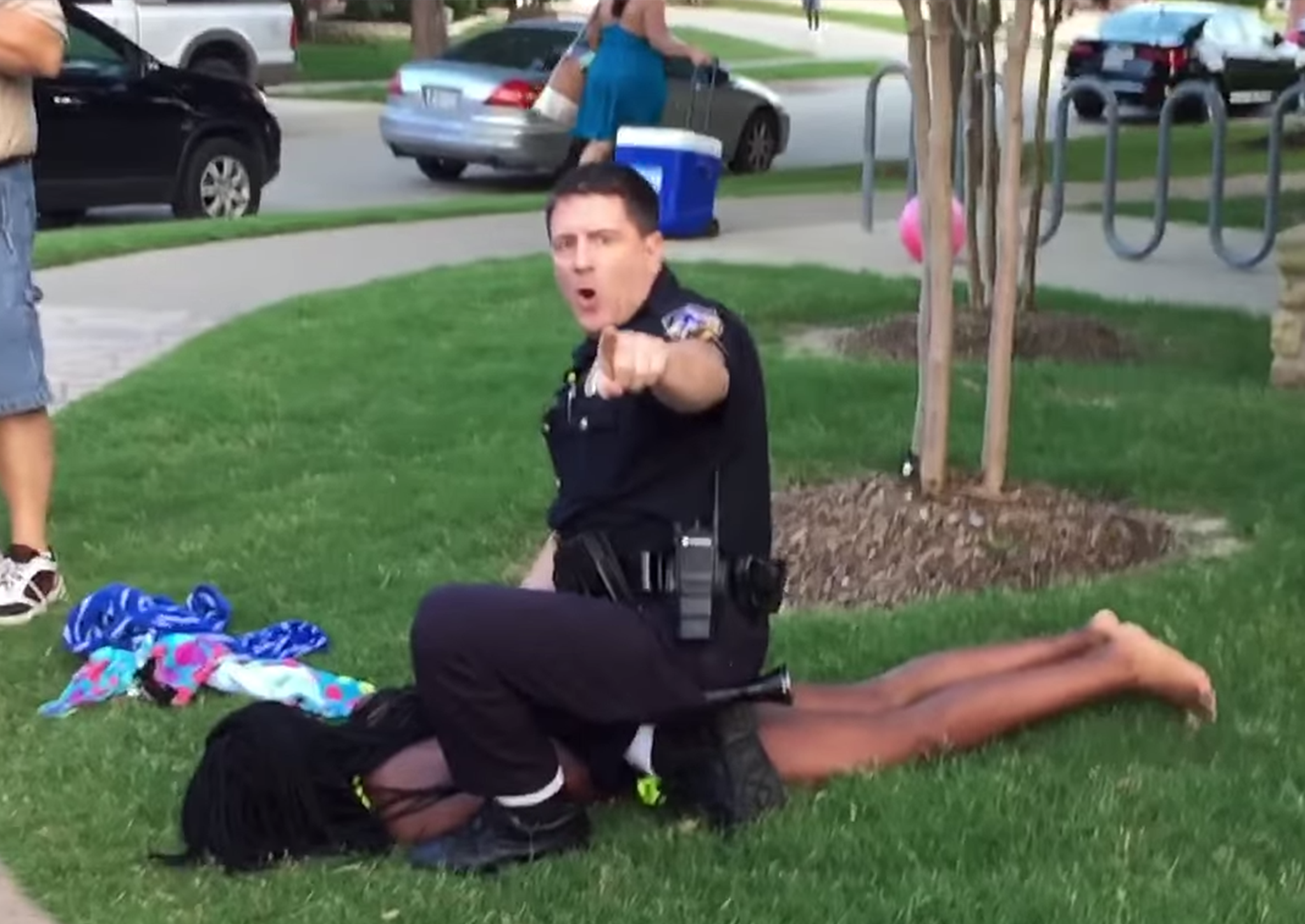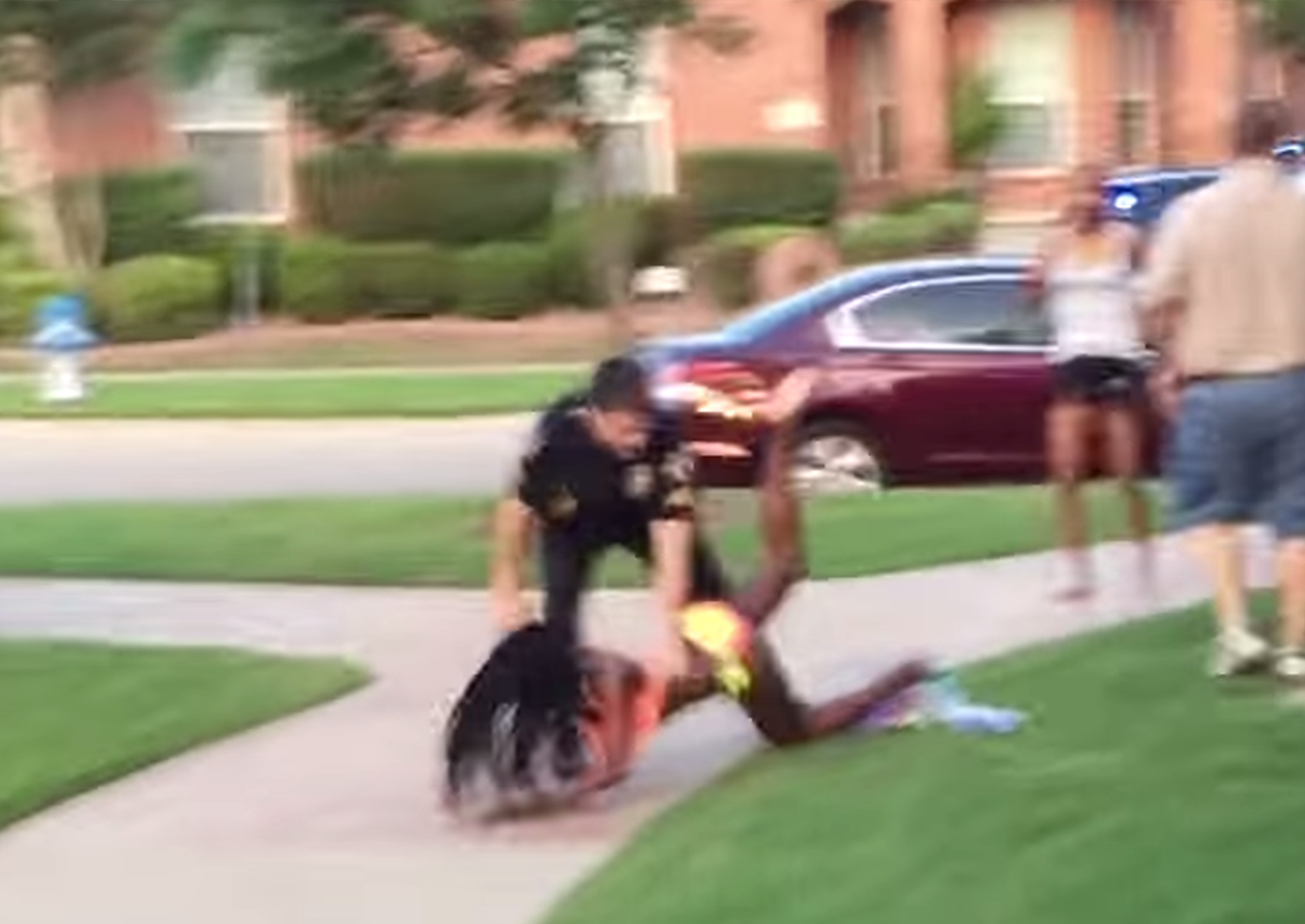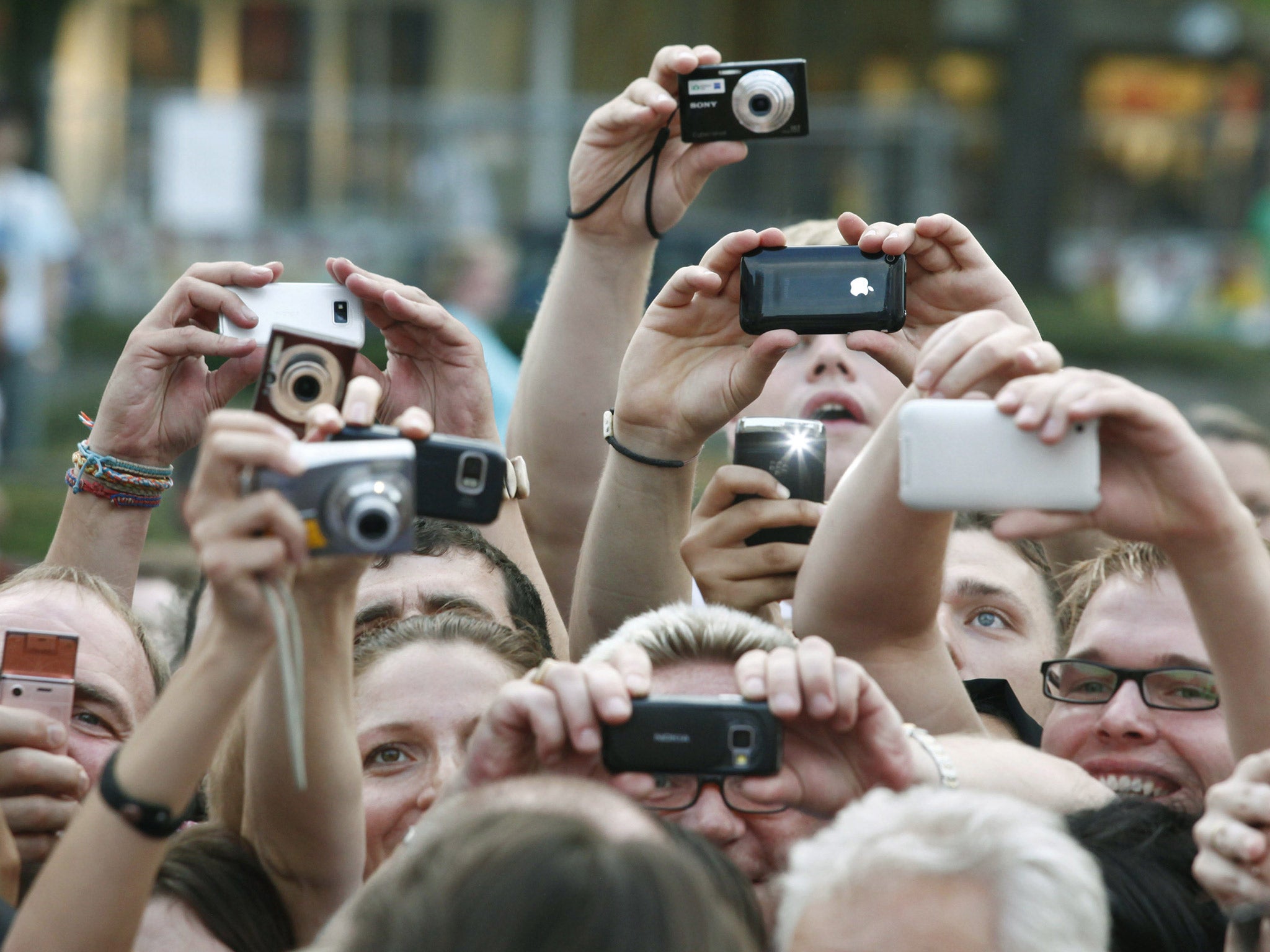Texas pool party: Did the police officer who slammed a girl to the ground in McKinney know that he was being filmed?
For police being recorded can 'have a natural tempering effect'

Your support helps us to tell the story
From reproductive rights to climate change to Big Tech, The Independent is on the ground when the story is developing. Whether it's investigating the financials of Elon Musk's pro-Trump PAC or producing our latest documentary, 'The A Word', which shines a light on the American women fighting for reproductive rights, we know how important it is to parse out the facts from the messaging.
At such a critical moment in US history, we need reporters on the ground. Your donation allows us to keep sending journalists to speak to both sides of the story.
The Independent is trusted by Americans across the entire political spectrum. And unlike many other quality news outlets, we choose not to lock Americans out of our reporting and analysis with paywalls. We believe quality journalism should be available to everyone, paid for by those who can afford it.
Your support makes all the difference.A police officer slams an unarmed 15-year-old girl in a bikini to the ground, pulls his gun and kneels on her as teens on either side of him shout and, of course, record the encounter. Within hours, millions watch the video: Some see a defenseless black teen being manhandled by an out-of-control white cop; others see a lone, scared officer in the crowded, chaotic aftermath of a fight he doesn’t yet understand.
Cellphone video has become as much a part of policing as tickets and handcuffs. Video images of police shootings have sparked national turmoil. But Friday’s ugly, cacophonous scene in McKinney, Tex., at first seemed like something more routine — a call about misbehaving teens at a pool party on a hot Texas afternoon.
Then it went awry, at least in the seven-minute version of reality that a local teen posted on YouTube. The clip is the classic kind of video that can crush public trust in police. Yet paradoxically, police chiefs are pushing for more video, in the form of body cameras, to repair relations with those they serve.
In theory, video sends a message of certainty: This is what happened, and we can all see it. Recorded snippets of an encounter between police and the public can reveal the crushing, life-or-death stress that officers face — and the overwhelming power an officer can wield.
Social-science research and folk wisdom agree that being watched can also change behavior. When people know they’re being recorded, they tend to clean up their acts, steal less, act nicer.
For police, whose own departments increasingly record their every move, “cameras have a natural tempering effect,” said Greg Seidel, who spent 25 years with the Petersburg Police Bureau in Virginia and now trains police on tactics and ethics. “Knowing that everything you say and do can be up for public inspection will make everybody more cautious.”
Yet YouTube is chockablock with recordings of video-monitored workers doing the wrong thing — in fast-food places, factories and nursing homes as well as patrol cars. Few would argue that Cpl. Eric Casebolt of the McKinney police was particularly tempered or cautious in his response to a call about disruptive teens in the suburb 40 miles north of Dallas.
Casebolt, a 10-year veteran who once received a Patrolman of the Year award and now has been placed on administrative leave from his job, is seen in the video repeatedly cursing at teenagers, pulling the hair of the girl he threw to the ground, and cuffing teens who calmly protested that they’d just arrived to attend the party.
At least two teens within a few feet of Casebolt held up smartphones as he threw the girl to the sidewalk. Brandon Brooks, a teen whose video of the incident had more than 7.2 million views on YouTube by Monday evening, felt compelled to post the footage because, he wrote, “this kind of force is uncalled for especially on children and innocent bystanders.”
Brooks, who is white, told BuzzFeed that the officer “didn’t even look at me. It was kind of like I was invisible.” Some police experts said Casebolt may not have noticed he was being recorded.
“You can get in that place — I’ve been there — where you just don’t see the cameras, where you have tunnel vision,” said Jim Bueermann, a former officer and police chief who is now president of the Police Foundation, a nonprofit group that seeks to improve policing. “If you believe you’re in danger, the adrenaline, the stress of the moment take control. And then your actions will be on the Web and starting down that viral path before you can even tell your sergeant what happened.”
Chuck Wexler, executive director of the Police Executive Research Forum, a Washington think tank, called the Texas video “appalling,” adding: “The people were in bathing suits. In this case, there isn’t anything that would justify taking out a gun.”
Annapolis Police Chief Michael Pristoop watched the video and wondered: “How come the officer doesn’t realize he’s going to be on the 6 o’clock news? It should be immediately clear to him that he is being filmed.”
Pristoop said he reminds officers “to be ever aware that everything they do should be considered public. . . . The fact they could be on camera should be foremost in their minds.”
Annapolis hasn’t decided whether to equip officers with body cameras. But Pristoop, like other chiefs, said he is frustrated that “there is an untold story of the thousands of interactions that never will be shown, the positive ones. It is the untoward acts that we see.”
Videos that go viral are by definition aberrations; they represent not the usual interactions between police and citizens but the unexpected, sometimes unacceptable moments. Yet many police departments do nothing to prepare officers for being recorded. A spokesman for the Los Angeles County Sheriff’s Department said its 18,000 employees receive no training on what to do when citizens pull out their smartphones.

In Baltimore, Lt. Victor Gearhart, a shift commander in the city’s southern police district, reminds officers every day that residents have the right to aim a camera at them.
“I tell the officer, ‘You have to stay in control at all times,’ ” said Gearhart, a 33-year veteran. Yet Gearhart said he is under no illusion that even good policing would make for comforting video. “There’s no way to make violence look pretty,” he said.
For example, most people don’t realize how hard it is to handcuff a person who doesn’t want to be handcuffed. At the police academy, he said, an instructor told two of the largest cadets to handcuff the smallest. They failed. “If we really wanted to cuff him,” Gearhart said, “we were going to have to really hurt him.”
When police faced off against demonstrators outside the 1968 Democratic National Convention in Chicago, protesters responded to the harsh tactics of city police by chanting, “The whole world is watching!” In those pre-digital days, “watching” meant network TV news cameras relaying scenes of bloodied antiwar protesters to a shocked national audience.
Now, no chants are needed. Videos of wayward police behavior are common enough and have had such a corrosive effect on public opinion that officer morale is sinking, police leaders said.
“Some cops are going to decide, ‘It’s just not worth it — I’m going to do something else,’ ” Bueermann said. For now, he said, the way to repair morale is to “set up community advisory groups and teach them what officers really go through. Police departments have to open up and let the community see that we have to do this together.”
In the longer run, technology may also help. Today’s videos “show only a slice of time, midstream, and the field of view of the camera is very limited,” Bueermann said.

But the next generation of body cameras promises views from multiple angles. Other advances will let supervisors monitor officers in real time, checking for rising blood pressure and a spiking pulse, “so we can provide a calming, defusing effect and say, ‘Chill out, we’re on our way,’ ” Bueermann said.
When officers who know they are being watched nonetheless behave with undue aggression, the problem is “poor selection and poor training,” said Stephen Curran, a psychologist in Towson, Md., who studies police and stress. “Most police departments don’t do psychological assessments of job candidates.”
But even good officers — like people in any line of work — can look bad when details of their workday are isolated in a video clip. Reporters’ reputations are hardly enhanced by viewers’ ability to watch the bedlam and aggression of many news conferences. Few surgeons would want the public to witness the harsh banter common in operating rooms. And many teachers would quickly bleach the humor out of their classrooms if video of the proceedings were fed to anxious parents.
“Very few officer-citizen contacts involve the delivery of good news,” said Seidel, the police trainer. “You’re usually asking people to do something they don’t want to do.”
Video doesn’t guarantee that officers will make the right decision, but it is the best enhancement of training to come along in years, Seidel said. He said he is “jealous of all the officers entering the force now, because they’ll be able to review their entire body of work and learn how to deal with dynamic situations.”
But learning those lessons, Seidel added, can be hard.
“Emotional maturity is the most important thing an officer can have, yet being good with people who are emotionally upset is difficult to measure,” he said. “It’s not like counting push-ups or timing a distance run.”
© Washington Post
Join our commenting forum
Join thought-provoking conversations, follow other Independent readers and see their replies
Comments